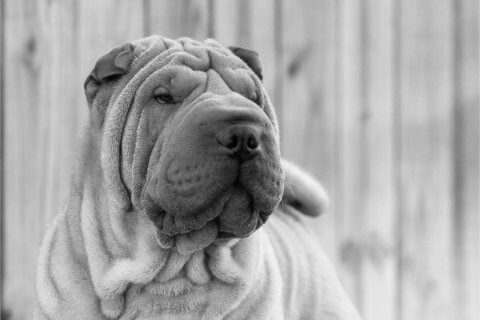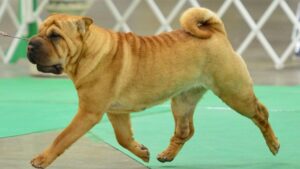
Judging the Chinese Shar-Pei
Discover the evolution of the Chinese Shar-Pei breed, highlighting improvements in temperament, health, and judging criteria.

Home » Meet The Breeds » Chinese Shar-Pei

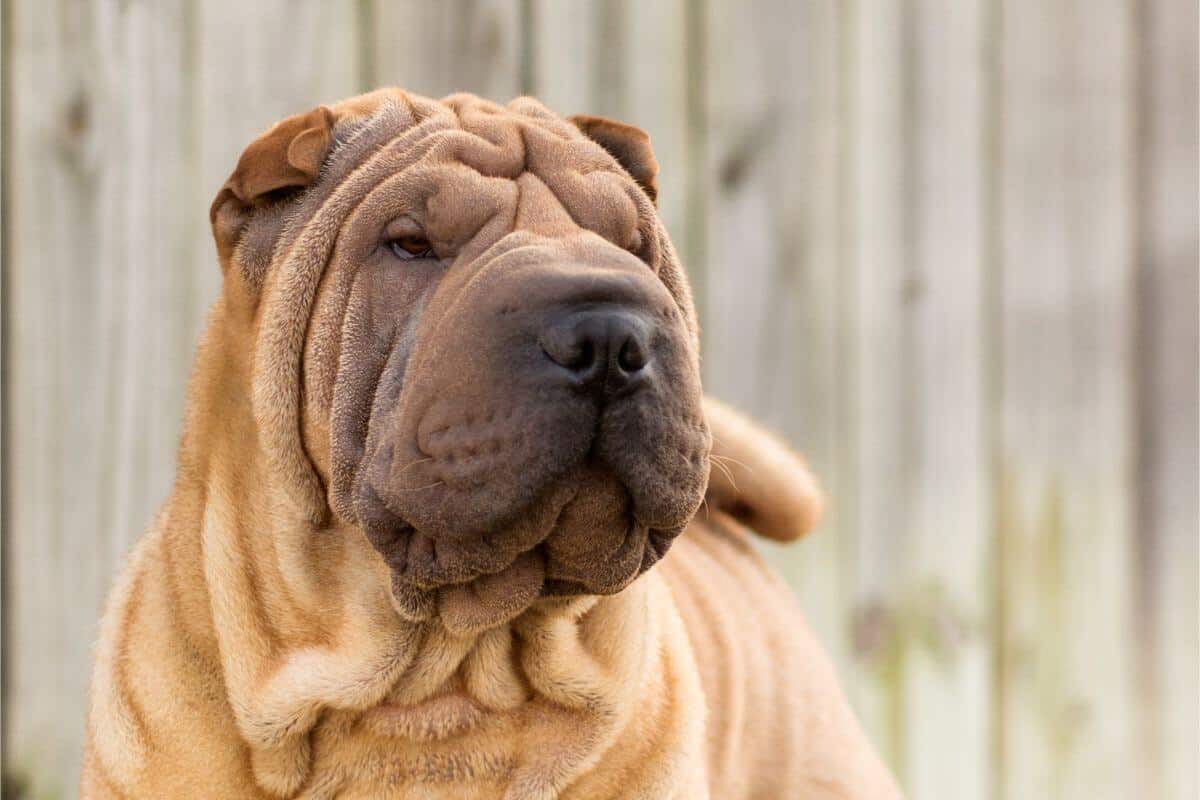
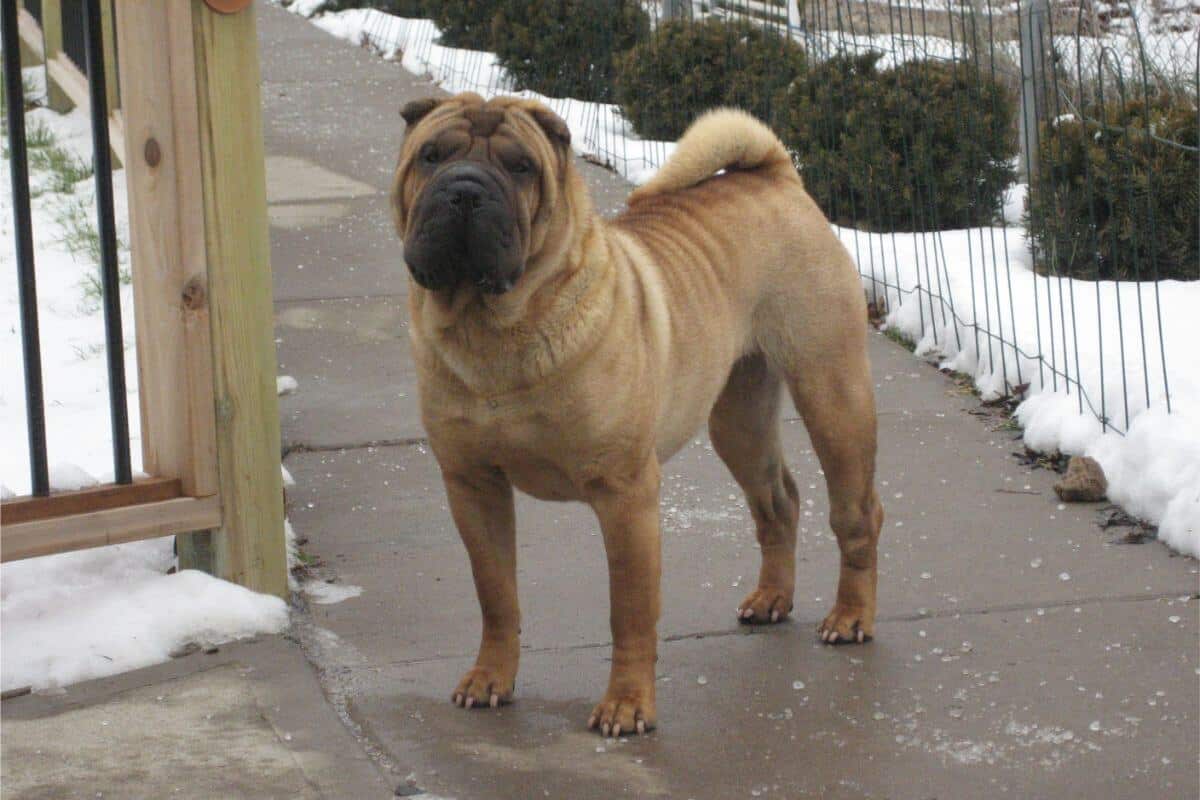
Chinese Shar-Pei Club of America
10/04/2025
The name “Shar-Pei” itself literally means “sand-skin”, but translated more loosely as “rough, sandy coat” or “sand-paper-like coat” and refers to the two distinctive qualities of the Shar-Pei coat – roughness and shortness – which make the breed unique in the dog world
Non-Sporting
18 – 20 inches
45 – 60 pounds
8 – 14 years
| Country of Origin | China |
|---|---|
| Bred For | Guarding, Hunting |
| Known For | Wrinkled Skin, Affection, Trainability |
| Popularity | Moderate |
| Temperament | Independent, Loyal, Calm |
| Activities | Hunting, Guarding, Running, Walking, Conformation Shows, Dog Sports, Swimming |
Taken from the CSPCA website:
“The Chinese Shar-Pei, an ancient and unique breed, is thought to have originated in the area around the small village of Tai Li in Kwangtung Province, and has existed for centuries in the southern provinces of China, apparently since the Han Dynasty (c. 200 B.C.). Statues bearing a strong resemblance to the Shar-Pei have been discovered and dated to this period. More recently, a Chinese manuscript of the 13th century has been translated; it refers to a wrinkled dog with characteristics much like those of the Shar-Pei.
The name “Shar-Pei” itself literally means “sand-skin”, but translated more loosely as “rough, sandy coat” or “sand-paper-like coat” and refers to the two distinctive qualities of the Shar-Pei coat – roughness and shortness – which make the breed unique in the dog world. The Shar-Pei shares another distinctive characteristic with only one other breed, the Chow-Chow, in having a blue-black tongue, which may indicate an ancestor common to both breeds. However, proof of such a relationship is difficult.
The history of the Chinese Shar-Pei in modern times is incomplete. However, it is known that following the establishment of the People’s Republic of China as a communist nation, the dog population of China was essentially eliminated. No dogs were seen in the cities, and few dogs remained in the countryside. During this period a few Chinese Shar-Pei were bred in Hong Kong, BC and in the Republic of China (Taiwan).
The breed was recognized by the Hong Kong Kennel Club until about 1968. Subsequently the Hong Kong and Kowloon Kennel Association established a dog registry and registered the Shar-Pei. This organization still registers the breed today as do other registries in Taiwan, Japan, Korea, as well as organizations in Europe, Canada and Great Britain.
In the United States, the documented history of the breed goes back to 1966 when a few dogs were imported from stock registered with the Hong Kong Kennel Club. The American Dog Breeders Association registered a Chinese Shar-Pei for J.C. Smith on October 8, 1970. Strong interest in the breed increased in 1973 when Matgo Law of Down-Homes Kennels, Hong Kong, appealed to dog fanciers in the United States to “Save the Chinese Shar-Pei”. The response was enthusiastic, and because of their rarity, a limited number of Shar-Pei arrived in the United States in the fall of 1973. The recipients of these dogs corresponded with each other and decided to form a national dog club and registry. The Chinese Shar-Pei Club of America, Inc. (CSPCA), held its first organizational meeting in 1974, and the club has been in continuous existence since that time. The first Annual National Specialty Show was held in 1978 and successive national shows have been held each year.
The Club’s primary purpose was to promote the breed, maintain the stud book registry and to provide a standard for the breed. On May 4, 1988 the Chinese Shar-Pei was accepted in to the American Kennel Club (AKC) Miscellaneous Class. The CSPCA continued to represent the breed and operated the registry until the AKC accepted the breed into the Non-Sporting Group on August 1, 1992. The CSPCA continues to promote the best interests of the breed, maintains the Standard and serves as a Member Club of the AKC.”
An alert, compact dog of medium size and substance; square in profile, close-coupled; the well-proportioned head is slightly, but not overly, large for the body. The short, harsh coat, the loose skin covering the head and body, the small ears, the “hippopotamus” muzzle shape, and the high-set tail impart to the Shar-Pei a unique look peculiar to him alone. The loose skin and wrinkles covering the head, neck, and body are superabundant in puppies, but these features may be limited to the head, neck, and withers in the adult.
The height is 18 to 20 inches at the withers. The weight is 45 to 60 pounds.
The dog is usually larger and more square bodied than the bitch but both appear well proportioned. The height of the Shar-Pei from the ground to the withers is approximately equal to the length from the point of breastbone to the point of rump.
Texture: The extremely harsh coat is one of the distinguishing features of the breed. The coat is absolutely straight and off-standing on the main trunk of the body but generally lies somewhat flatter on the limbs. The coat appears healthy without being shiny or lustrous. Acceptable coat lengths may range from the extremely short “horse coat” up to the “brush coat,” not to exceed one inch in length at the withers. A soft coat, a wavy coat, a coat in excess of one inch at the withers or a coat that has been trimmed is a major fault. The Shar-Pei is shown in its natural state.
Chinese Shar-Pei Colors:
Chinese Shar-Pei Markings:
Nothing is in the Breed Standard about markings as the breed is solid-colored, with potentially some shading.
A Note About Color: Only solid colors and sable are acceptable and are to be judged on an equal basis. A solid color dog may have shading, primarily darker, down the back and on the ears. The shading must be variations of the same body color and may include darker hairs throughout the coat. The following colors are disqualifications: Albino; Not a solid color, i.e., Brindle; Parti-colored; Spotted; Patterned in any combination of colors.
The head is large, slightly, but not overly, proudly carried and covered with profuse wrinkles on the forehead continuing into side wrinkles framing the face.
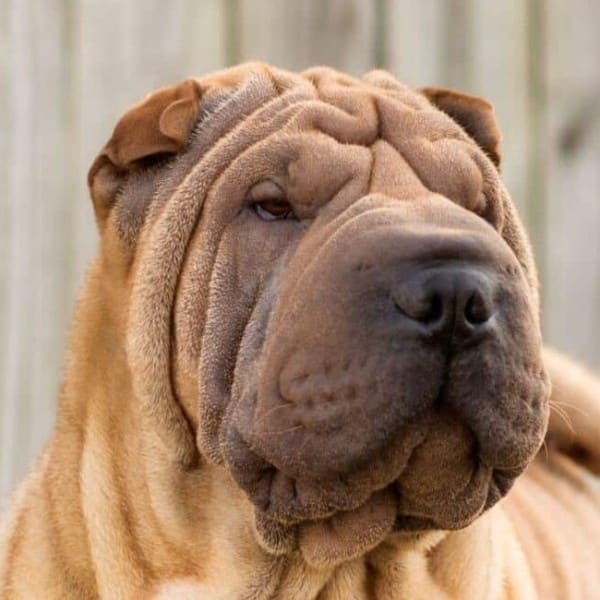
The high-set tail is a characteristic feature of the Shar-Pei. A low-set tail shall be faulted. The tail is thick and round at the base, tapering to a fine point and curling over or to either side of the back. The absence of a complete tail is a disqualification.
The most common health issues may be found on the Chinese Shar-Pei Club of America website: https://cspca.com/most-common-heath-issues/
Lifespan: Like most breeds, life expectancy will vary; however, most Shar-Pei live 8-14 years.
While you can see some things on the Orthopedic Foundation for Animals (OFA) website, https://ofa.org/chic-programs/browse-by-breed/?breed=SP, the breed tendencies can be great or small. There is some elbow dysplasia, hip dysplasia, and patellar luxation; there are some autoimmune issues, and testing has been developed to help understand kidney issues, kidney amyloidosis, and auto-inflammatory disease.
Shar-Pei are smart, stubborn, funny, very easy to housebreak, independent, and devoted to their family.
The owners/breeders of Shar-Pei feed quality commercial or raw diets, or a combination of those. It depends on the dog and the owner.
The breed has been trained in a wide range of areas, from simple Obedience to Therapy, to even things as far flung as Herding and Scent Trials. This is a very versatile breed!
| Energy Level | Can be low, moderate, or high, really, depending on the lifestyle of the owner. Shar-Pei can live happily in apartments with walks, homes with yards, or be working dogs and dogs that hike regularly! |
|---|---|
| Exercise Requirements | This varies, and is most often established by the home the Shar-Pei grows up in. On average, most would like a good walk, or a yard to run around the perimeter of, but they don’t require huge amounts of focused exercise. That said, young dogs love a good boot scoot race around every now and then; dogs used in different exercises can keep up well. The breed will play, some chase balls, very few dig or climb. |
This is very much a “wash and wear” breed. The Shar-Pei can be brushed, though it’s not required, and is a good idea during the shedding season. Bathing can be weekly or monthly. Nails are very hard, and many use a Dremel weekly or every two weeks. Tooth brushing is good for all dogs. Some ears can have small canals and require more diligence, other ears are low maintenance.
| Coat Type | Horse Coat or Brush Coat |
|---|---|
| Grooming Requirements | Occasional Brushing, Weekly or Monthly Bathing, Routine Ear Cleaning, Weekly or Bi-Weekly Nail Trimming, Regular Tooth Brushing |
Many people who own one Shar-Pei will own more, and many will always have one. The breed is easy to live with, and loving and funny!
There is nothing specific about caring for a Shar-Pei puppy.
Of course, there is Conformation and Obedience, but Shar-Pei can and have competed in Scent Work, Tracking, Barn Hunt, Coursing, Trick Dog, Flyball, and nearly every other possible dog-related sport!
The Chinese Shar-Pei is recognized by the world’s leading registries and kennel organizations, which categorize the breed into a specific Group based on its unique characteristics. This breed is recognized worldwide under the following Group designations:
| Organization | Group Designation |
|---|---|
| AKC (American Kennel Club) | Non-Sporting |
| UKC (United Kennel Club) | Northern |
| CKC (Canadian Kennel Club) | Non-Sporting |
| ANKC (Australian National Kennel Council) | Non Sporting |
| RKC (The Royal Kennel Club) | Utility |
| FCI (Fédération Cynologique Internationale) | Group 2: Pinscher and Schnauzer Molossoid Breeds – Swiss Mountain and Cattle Dogs; Section 2.1: Molossoid breeds, Mastiff Type |
The ideal Chinese Shar-Pei is described by a Breed Standard that is approved by each of the world’s leading registries and kennel organizations. The Breed Standards for this breed may be found in the following links:
| Organization | Breed Standard |
|---|---|
| American Kennel Club | AKC Chinese Shar-Pei Breed Standard |
| United Kennel Club | UKC Chinese Shar-Pei Breed Standard |
| Canadian Kennel Club | CKC Chinese Shar-Pei Breed Standard |
| Australian National Kennel Council | ANKC Chinese Shar-Pei Breed Standard |
| The Royal Kennel Club | RKC Chinese Shar-Pei Breed Standard |
| Fédération Cynologique Internationale | FCI Chinese Shar-Pei Breed Standard |
There are many rescue groups, and they are listed on the parent club website.
No, the wrinkles move and air can reach the skin!
They never had the temperament for a fighting dog, so while the Chinese tried to pit them and wager on them, it never worked!
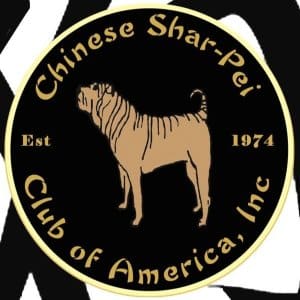
The Chinese Shar-Pei Club of America (“CSPCA”) is a national nonprofit organization, incorporated under the laws of the State of Delaware. Fifteen individuals founded the club in 1974. With over 700 members representing most of the 50 states and several other countries, the CSPCA is the “parent” organization of multiple Chinese Shar-Pei Specialty Clubs located throughout the United States. The CSPCA is a member of the American Kennel Club (AKC) and, as such, is the only national Chinese Shar-Pei breed club which is recognized and sanctioned by the AKC. The primary objective of the club is to support the members whether they are pet, conformation, performance, versatility or therapy fanciers. We encourage our breeders, by selective breeding, to produce purebred Chinese Shar-Pei puppies that conform to the Standard for the Breed, and to do all possible, including testing before breeding, to advance and promote the perfection of these qualities.

Discover the evolution of the Chinese Shar-Pei breed, highlighting improvements in temperament, health, and judging criteria.

Explore Lisa Myers’ breeding of Chinese Shar-Pei under the “Asia” prefix, focusing on health, temperament, and breed standards.

Discover Lisa Moller’s expertise in breeding Chinese Shar-Pei at Sentry Kennels, focusing on health, temperament, and quality.

Lisa Myers is the breeder behind Asia Chinese Shar-Pei. Read about the kennel’s beginnings, puppies, and much more!

Interview with purebred Chinese Shar-pei Breeder Cyndi Skinner – Rumples Chinese Shar-pei, by Allan Reznik.
The best way to ensure a long and happy relationship with a purebred dog is to purchase one from a responsible breeder. Not sure where to begin?
Contact the National Parent Club’s Breeder Referral Program, which is listed on the AKC Breeder Referral Contacts page.
